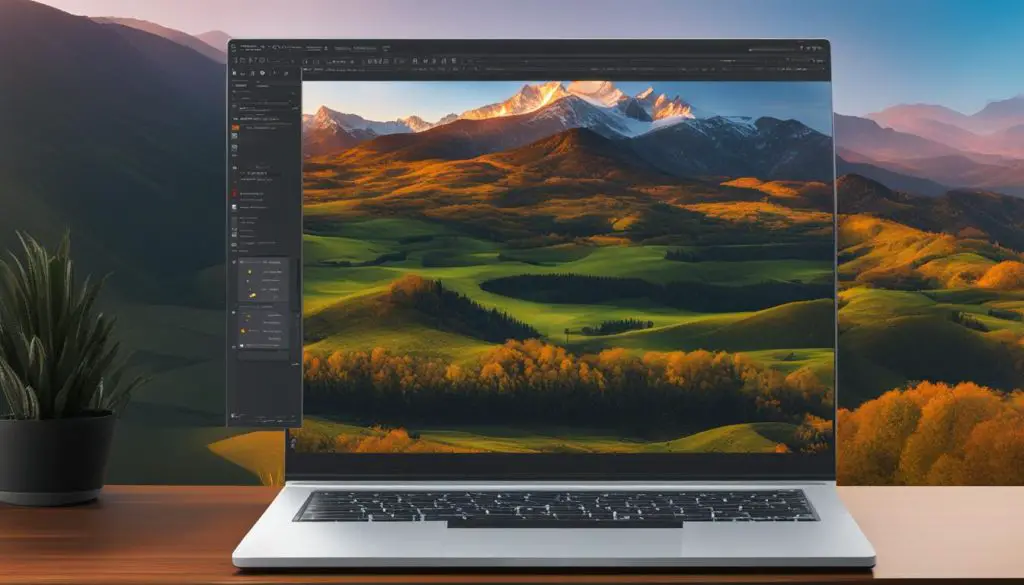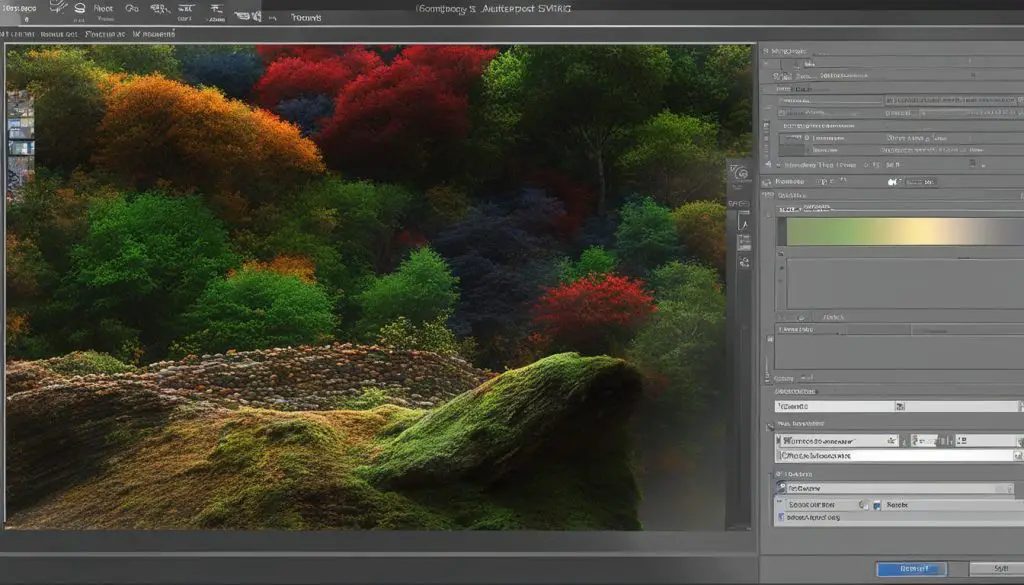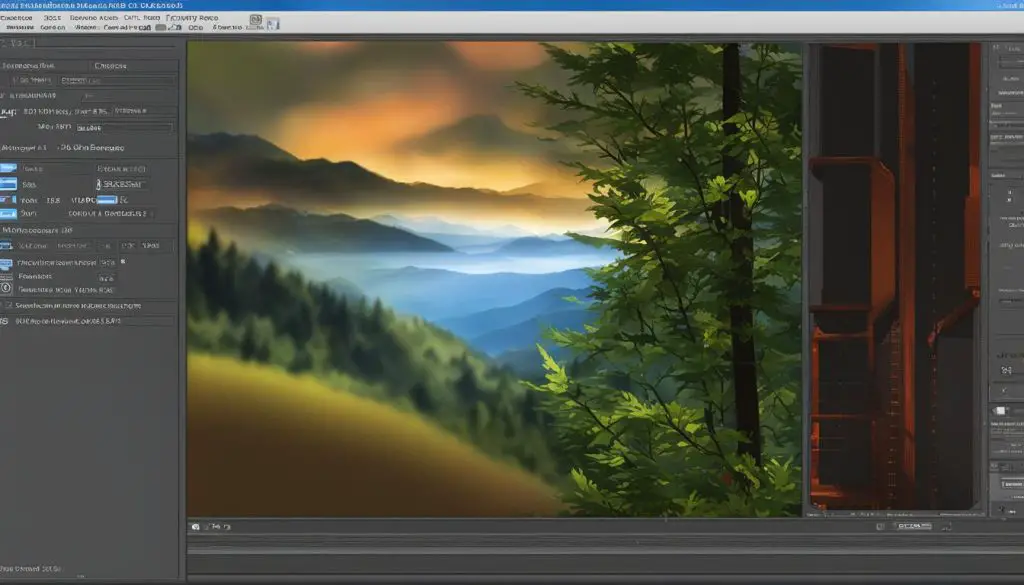GIMP, a popular graphics editing tool, does not have native support for exporting images as SVG. However, there are workarounds that you can use to achieve this. In this article, we will explore two methods using external tools like Inkscape and Autotrace to export images as SVG from GIMP.

Key Takeaways
- GIMP does not have built-in support for exporting images as SVG.
- External tools like Inkscape and Autotrace can be used to convert raster images to SVG from GIMP.
- Inkscape provides a user-friendly interface and various tools for converting images to SVG.
- Autotrace is a command-line tool that offers quick conversions of raster images to SVG.
- Creating high-quality SVG images requires careful consideration of the original image and design complexity.
Using Inkscape to Convert Images to SVG
If you’re looking to export images as SVG from GIMP, one of the most effective methods is by using Inkscape. Inkscape is a free and open-source vector graphics editor that provides a user-friendly interface and a range of tools for converting raster images into high-quality vector graphics.
To get started with Inkscape, you’ll need to download and install it from the official website. Once installed, open Inkscape and import your raster image. From there, you can trace the bitmap using the “Trace Bitmap” function, which allows you to convert the image into paths and curves.
After tracing the bitmap, you can adjust the parameters to fine-tune the result according to your preferences. Inkscape provides various options for optimizing the conversion process, such as adjusting the number of colors, smoothing the result, or removing background noise.
Once you’re satisfied with the traced image, you can preview it to ensure the quality meets your requirements. Finally, save the image as an SVG file using the “Save As” function in Inkscape. This will produce a scalable vector graphic that can be easily edited and resized without losing image quality.
Example Image Conversion Process in Inkscape
Let’s take a look at a step-by-step example of converting an image to SVG using Inkscape:
- Download and install Inkscape from the official website.
- Open Inkscape and import your raster image.
- Select the image and choose the “Trace Bitmap” function from the “Path” menu.
- Adjust the parameters, such as the number of colors and smoothing options, to optimize the result.
- Preview the traced image and make any necessary adjustments.
- Save the image as an SVG file using the “Save As” function.
By following these steps, you can effectively convert raster images to SVG using Inkscape, providing you with scalable vector graphics that can be used in various design projects.
Table: Comparison of Inkscape and Autotrace for Converting Images to SVG
| Features | Inkscape | Autotrace |
|---|---|---|
| User Interface | User-friendly interface with a range of tools for editing and creating vector graphics. | Command-line tool without a graphical interface. |
| Conversion Process | Import raster image, trace bitmap, adjust parameters, preview, and save as SVG. | Execute command with appropriate parameters in the terminal or command prompt. |
| Flexibility | Offers extensive options for adjusting the conversion process and optimizing the result. | Provides quick conversions but may have limitations and compatibility issues with certain image formats. |
Using Autotrace to Convert Images to SVG
Autotrace is a powerful command-line tool that can be used to convert raster images into scalable vector graphics (SVG) format. It provides a quick and efficient solution for exporting images as SVG from GIMP, allowing you to retain the quality and scalability of vector graphics.
To begin using Autotrace, you will need to download and install it from the official website. Once installed, open the terminal or command prompt and navigate to the directory where your image is located. Execute the Autotrace command with the appropriate parameters to convert the image to SVG.
It’s important to note that Autotrace may have some limitations and might not work well with certain image formats. Therefore, it’s recommended to test it with different images to ensure the output meets your requirements. Although Autotrace offers quick conversions through the command line, it may not provide the same user-friendly interface and editing capabilities as other tools like Inkscape.
In summary, Autotrace provides a viable option for converting raster images to SVG format, but it’s essential to consider its limitations and compatibility with different image formats. If you prefer a user-friendly interface and more advanced editing features, you may want to explore other options like Inkscape.

Comparison between Inkscape and Autotrace
| Features | Inkscape | Autotrace |
|---|---|---|
| User-Friendly Interface | ✓ | ✗ |
| Advanced Editing Tools | ✓ | ✗ |
| Compatibility with Image Formats | Wide range | May have limitations |
| Conversion Speed | Varies | Quick |
Conclusion
While GIMP does not natively support exporting images as SVG, it is still possible to achieve this with the help of external tools like Inkscape and Autotrace. Inkscape provides a user-friendly interface and various tools for converting raster images into vector graphics, while Autotrace offers quick conversions through the command line. The choice between Inkscape and Autotrace depends on your preferences and needs.
Converting raster images to vector graphics can be a complex process, and the quality of the output can vary depending on the complexity and quality of the original image. However, with practice and the right tools, such as Inkscape and Autotrace, you can create high-quality SVG images. It’s important to keep in mind that the quality of the original image and the complexity of the design play a significant role in the final output.
When using Inkscape or Autotrace, it’s crucial to adjust the tracing parameters and settings according to your specific requirements. This may involve experimenting with different options to achieve the desired result. Additionally, it’s worth noting that Inkscape provides a user-friendly interface where you can preview and fine-tune the traced image before saving it as an SVG file. On the other hand, Autotrace offers a quick and efficient solution through the command line, but it may have limitations and may not work optimally with certain image formats.
With the right tools, patience, and attention to detail, you can successfully export images as SVG from GIMP using external tools like Inkscape and Autotrace. These tools provide the flexibility and customization options necessary to create professional-quality SVG images for various purposes, such as web design, graphic design, and more.
How to Install Inkscape
To install Inkscape, follow these simple steps:
- Visit the official Inkscape website at https://inkscape.org/.
- Click on the “Download” button and choose the appropriate version for your operating system (Windows, macOS, or Linux).
- Once the download is complete, open the installer and follow the on-screen instructions to install Inkscape.
- After the installation is complete, you can launch Inkscape by double-clicking on the desktop icon or by searching for it in the Start menu (Windows) or Applications folder (macOS).
Congratulations! You have successfully installed Inkscape on your computer. Now you can start using it to convert raster images to SVG and explore all the amazing features it offers.
Customizing Inkscape Settings
Once you have Inkscape installed, you can customize the settings to ensure optimal SVG export. Here are a few key settings you may want to consider:
- Export Resolution: Adjust the export resolution to control the level of detail in your SVG file. Higher resolutions will result in larger file sizes.
- Save Options: In the “Save As” dialog, you can choose various options such as saving with or without an Inkscape-specific namespace, optimizing for space, embedding images, and more.
- Default Units: In the “Document Properties” dialog, you can set the default units for your SVG files, such as pixels, inches, millimeters, etc.
- Color Management: Inkscape offers color management options to ensure accurate color reproduction in your SVG files.
By customizing these settings, you can tailor your SVG export to meet your specific requirements and achieve the desired results.
Complete Table
| Setting | Description |
|---|---|
| Export Resolution | Adjust the export resolution to control the level of detail in your SVG file. Higher resolutions will result in larger file sizes. |
| Save Options | Choose various options such as saving with or without an Inkscape-specific namespace, optimizing for space, embedding images, and more. |
| Default Units | Set the default units for your SVG files, such as pixels, inches, millimeters, etc. |
| Color Management | Utilize color management options to ensure accurate color reproduction in your SVG files. |
How to Install Autotrace
To install Autotrace, follow the steps below:
Step 1: Visit the official website
Go to the official Autotrace website by typing “Autotrace” into your preferred search engine. Look for the official website and click on the link.
Step 2: Download the appropriate version
Once on the Autotrace website, navigate to the “Downloads” or “Get Autotrace” section. Choose the version that is compatible with your operating system (Windows, Mac, Linux, etc.). Click on the download link for the appropriate version.
Step 3: Follow the installation instructions
Locate the downloaded file in your system and double-click on it to start the installation process. Follow the on-screen instructions to complete the installation. If any additional prompts or settings appear during the installation, make sure to review them and adjust as needed.
Once the installation is complete, you can start using Autotrace to convert raster images to SVG by opening the terminal or command prompt, navigating to the directory where your image is located, and executing the Autotrace command with the appropriate parameters.

Tips for Creating High-Quality SVG Images
When saving images as SVG in GIMP, there are a few tips you can follow to ensure high-quality results. Consider the quality of the original image and the complexity of the design. Converting raster images to vector graphics can be a complex process, and the quality of the output can vary.
To create high-quality SVG images, it’s important to keep paths simple. Complex paths with many vertices can result in larger file sizes and potential rendering issues. Avoid overlapping vertices as much as possible to maintain clean and precise lines in your SVG.
Using solid colors instead of gradients can also help improve the quality of your SVG. Gradients can sometimes cause issues when exporting to SVG, so opting for solid colors can ensure a smoother conversion process. It’s also a good practice to test the output with different images to ensure the final SVG meets your requirements.
Consider the following tips for creating high-quality SVG images:
1. Keep paths simple and avoid complex shapes with many vertices.
2. Avoid overlapping vertices to ensure clean and precise lines.
3. Use solid colors instead of gradients to prevent potential issues during conversion.
4. Test the output with different images to ensure the SVG meets your requirements.
